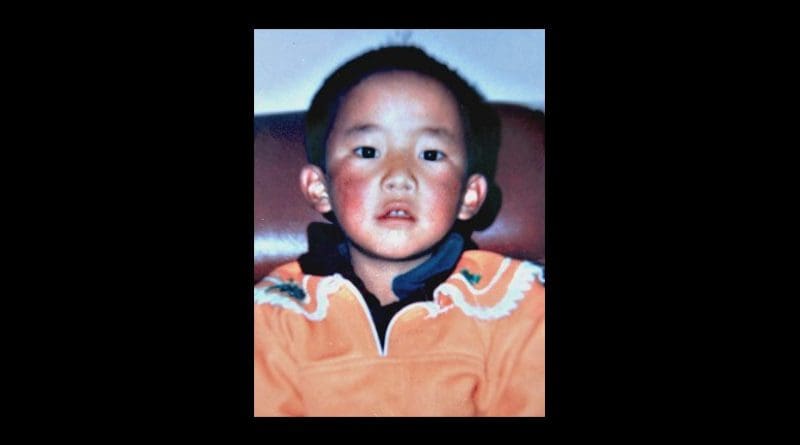China Says Panchen Lama ‘Living A Normal Life’
By UCA News
China has used the 50-year anniversary of its annexation of Tibet to give a rare explanation on the fate of Tibet’s second spiritual leader as Beijing stepped up a dispute with Buddhist leaders over who controls reincarnations.
Advocacy groups have rejected as insufficient claims by Beijing, made Sept. 6, that the Panchen Lama Gendun Choekyi Nyima, the man chosen by the Dalai Lama in May 1995 as the reincarnation of Tibet’s No. 2 spiritual leader, was “living a normal life” and “does not want to be disturbed.”
Beijing’s explanation has fallen short of requests by the United Nations and human rights groups to explain where he is, said Matteo Meccaci, president of the International Campaign for Tibet in Washington D.C.
“Until this happens, the case of the Panchen Lama remains an ‘enforced disappearance’ according to international law,” Mecacci told ucanews.com.
Once known as the “world’s youngest political prisoner,” the then six-year-old Gendun Choekyi Nyima disappeared three days after being anointed by the Dalai Lama in May, 1995 and has not been seen since.
Beijing then appointed Gyaltsen Norbu, 25, as Panchen Lama following a process it said was based on a ceremony started under the Qing Dynasty in the late 18th century. But China’s choice has rarely appeared in public, although during a rare speech in Beijing in March he warned a quota on monks was harming Buddhism in what was viewed as a thinly veiled attack on government policy.
Meanwhile, Gendun Choekyi Nyima has not been seen at all. In recent years, Beijing said he was at school and his parents had taken government jobs, the latter claim repeated Sept. 6.
“This was their line in the 1990s and it’s what we would expect them to stick with,” said Alistair Currie, spokesman of London-based Free Tibet. “It might be true but if so, it leaves significant unanswered questions about the fate of his family and how their silence has been maintained.”
China’s handling of the Panchen Lama dispute is widely viewed as a dress rehearsal for the reincarnation of the still popular Dalai Lama, who turned 80 in August. The Communist Party views the process as the key to ending Tibetan resistance to Chinese rule.
At the same time Beijing has reiterated its right to manage the Dalai Lama’s reincarnation, as it released a white paper lauding its achievements in Tibet to mark 50 years since establishing a local administration in the Himalayan region.
“No matter what the Dalai Lama says or does, he can’t deny the central government’s right to confirm the new incarnation,” said Norbu Dondrup, a Chinese government official who serves as a liaison to Tibet.
State broadcaster CCTV is due to screen live broadcasts of the 50th anniversary ceremony led by Politburo member Yu Zhengsheng, one of Xiu Jinping’s closest allies, at the Dalai Lama’s former residence, the Potala Palace, on Sept. 8.
Lobsang Sangay the head of Tibet’s exiled government in India, said last week there was “nothing to celebrate in Tibet” after 50 years of brutal rule from Beijing.
He noted the self-immolation of Tashi Kyi last month, one of at least 140 Tibetans to set themselves on fire to protest Chinese rule since Beijing crushed an uprising in 2009.
Pre-empting Beijing’s paper, the exiled government last week released its own report on Tibet after 50 years of Chinese rule that warned the Chinese government faced a major backlash if it tries to control the Dalai Lama’s reincarnation.
“Now, the [Communist] Party wants to wait for the passing of the 14th Dalai Lama and then select a pliant successor to continue its rule in Tibet,” the report said. “Such a move on the part of China will create an international Furor comparable to China muscling its way into the South China Sea.”

